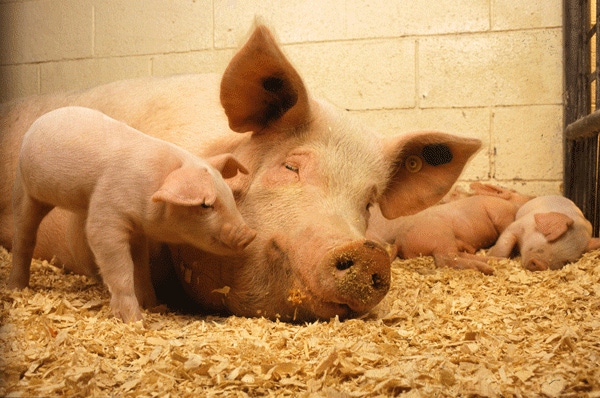
Feed price surge dims hog profit outlook, dampens expansion plans
• Rapid increases in feed prices have raised expected costs nearly five dollars per live hundredweight from their lows in early August.• This hasn’t wiped out profit potential, but should make hog producers more cautious about any expansion plans.
August 27, 2013

Just when it appeared hog producers were headed safely back to profitability in 2014, hot and dry weather late in the growing season threatens the bright outlook.
Rapid increases in feed prices have raised expected costs nearly five dollars per live hundredweight from their lows in early August. This hasn’t wiped out profit potential, but should make hog producers more cautious about any expansion plans.
It appears expansion needs to be constrained to no more than a three percent increase in the breeding herd over the next year.
At this writing, December corn futures have advanced to near $5 per bushel, fully 50 cents per bushel higher than the lows made in early August. The impact of a 50 cent per bushel rise in corn prices is about $2.20 higher hog production costs on a live weight basis.
October soybean meal prices have risen to $440 per ton, up about $90 per ton from their August lows. A price increase of this magnitude raises hog production costs about $2.80 per live hundredweight.
In combination, the two price increases have pushed up expected costs by nearly five dollars per live hundredweight. Expected costs over the next 12 months are now estimated to be near $59.
While the cost outlook has risen, the hog price outlook has not increased proportionally to feed prices. Expected margins have narrowed, but not collapsed.
Starting with a cost of $59 per live hundredweight, current forecasts of hog prices will cover those costs. Prices this fall and winter are expected to be around $61, rise to $65 in the second quarter of 2014, and then drop to about $62 for a third quarter average.
That makes the average over the year spanning the fourth quarter of 2013 through the third quarter of 2014 about $62.50 and provides an expected profit of about $3.50 per hundredweight, or nearly $10 per head.
Some expansion plans may be aborted
The unexpected recent surge in feed prices may cause some preliminary expansion plans to be aborted, and therefore increases the likelihood that lean hog futures prices will also rise some from current levels that are based on expectations of a larger expansion.
The magnitude of the increase is difficult to evaluate until a clearer picture develops around the actual yields and prices from the 2013 corn and soybean crops. That picture will get a bit clearer with the abatement of the current hot/dry spell and also with the USDA production updates on Sept. 12.
However, feed prices probably will not be known with much certainty until more harvest activity is under way in October and USDA issues their monthly production updates on Oct. 11. The impact on lean hog futures would be to increase contract prices for August 2014 and later maturity.
Given the current outlook for hog and feed prices, a relatively small breeding herd expansion could increase pork supplies to a level that would push the industry back into losses starting in the fall of 2014.
A two to three percent breeding herd expansion would be expected to push the industry back to breakeven. While that seems like a small number, there are multiple factors that support this expectation.
First, a two percent expansion in the breeding herd means that production will grow by a much larger amount. The number of pigs per litter has been growing by an annual average of 1.8 percent over the last five years. Weights will also increase, so a two percent increase in the breeding herd means about a four percent expansion in pork production.
Competitive meats will have a differential impact in 2014. Expansion of three to four percent in poultry production will increase competition for pork and trim the size of expansion that would drive the pork industry to a breakeven situation.
However, beef production is expected to be down five percent and that gives the pork industry the opportunity to expand somewhat to gain a bigger share of the consumption that beef will be losing in 2014.
When all of these factors are brought together, it means that the industry should strive for a modest expansion. Advice to individual pork producers at this point is to limit expansion to two to three percent.
World corn and soybean markets were expected to make some progress this year toward increasing carryover inventories. If inventories could be increased, that would then bring lower feed prices and less volatility.
The current hot/dry spell in the U.S. brings that hope into question and reminds us that feed prices will remain volatile until actual progress is made toward world production exceeding world usage.
While the odds for the U.S. to contribute to that goal have been lowered in recent days, Southern Hemisphere production could move in that direction this winter, especially for soybean meal.
More from Southeast Farm Press
Timely fungicides will help finish South Carolina peanut crop
Kentucky weather website offers new, valuable information for farmers
Heavy ears, shallow roots could complicate corn harvest
South Carolina peach grower looking for immigration reform
You May Also Like



